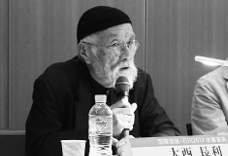Discussion
審査講評(2)
Comments on the Grand Prize Winner

Ohnishi ───── Good morning, ladies and gentlemen. Thank you for coming all the way to Kanazawa and participating in the round table discussion. For me, as an Urushi artist, this exhibition is very important and I am happy to be here at its eleventh installment. We keep saying “Urushi is important,” and we keep asking the question “what part of Urushi is important?” However, it is quite difficult to explain in words.
I have been involved in this exhibition since it was first held in 1989. This year, as in previous years, the exhibition’s theme is ʻThe Future of Urushi.ʼ I have always hoped that Urushi culture could become better understood and that inspiration for creating Urushi objects could be broadened. Contrary to my hopes, it has actually been quite difficult to encourage people to enjoy Urushi ware in their lives, and have more interest in Urushi art. Nevertheless, as Mr Arakawa mentioned, awareness of Urushi ware and Urushi art have been gradually spreading among people at home and abroad. Indeed, I do not hope that Urushi culture spreads swiftly around the world as a fad and then disappears just as swiftly.
I waited for the selected works to arrive with great expectation, wondering how many works would be submitted and from what kind of people. I saw all the selected works at the Final Assessment and felt that gradually, there has been an increase in interest from overseas applicants. In particular we have received excellent works from Russian Urushi artists at the present and previous exhibitions. Russian artists were historically not very familiar with Japan’s Urushi lacquer, despite being neighboring countries, so I am glad to see that Urushi art has been introduced to Russia. This time four works from Russia were selected. Their lacquer technique is high-quality and thoroughly applied to their works. They create works with their own originality under their own climate, while also being influenced by Japan’s Urushi art. I think it is magnificent. I can strongly sense their interest in lacquer techniques.
At the Preliminary Assessment, the members of the Assessment Panel had to select about 80 works out of 176 domestic and international submissions. It was an incredibly difficult task. Judging a work based on digital images can only give a limited impression. All the members looked at each work again and again. We made great efforts to assess each work as precisely as possible, though I am afraid that humans do have limits. I would have selected more works if the exhibition venue had more space.
Yesterday the Final Assessment was held and the Grand Prize winner and the two Gold Prize winners, one each from the Art Category and the Design Category, were selected. It was also hard to select the three best works out of 80 for the top three prizes. The works selected from both categories have originality and are created with refined Urushi techniques. The theme, how they should express themselves through utilizing techniques to create inspiration for a new era, is the hardest challenge. Anyone who has advanced technical skills can make whatever they want. However, once they start making their own works, they cannot create anything without considering time, society, and life. While examining the works selected at the Preliminary Assessment, we strongly felt their difficulty.
Now that we live in a global era, we would like to hand down this graceful Urushi culture and promote Urushi art throughout the world. All the jurors share these hopes and expectations.
